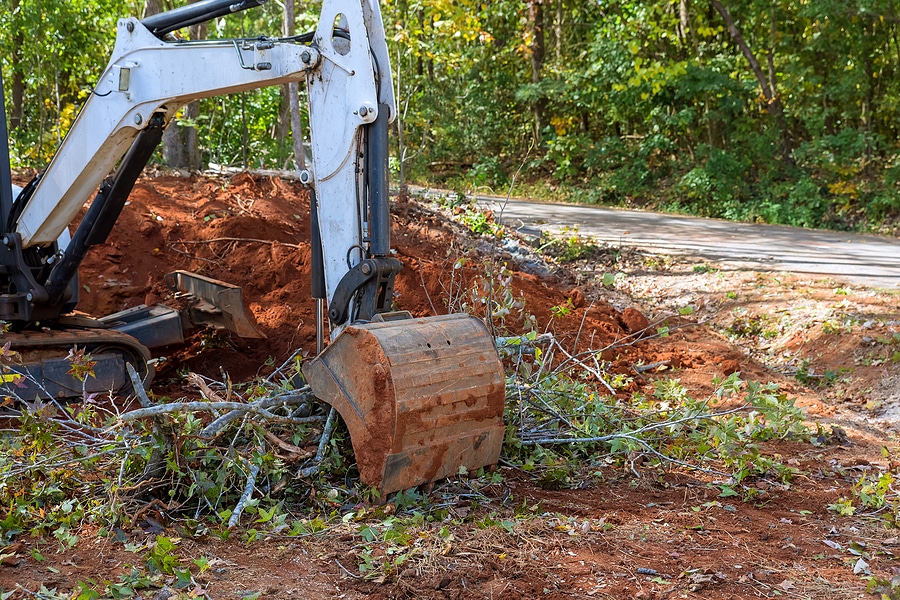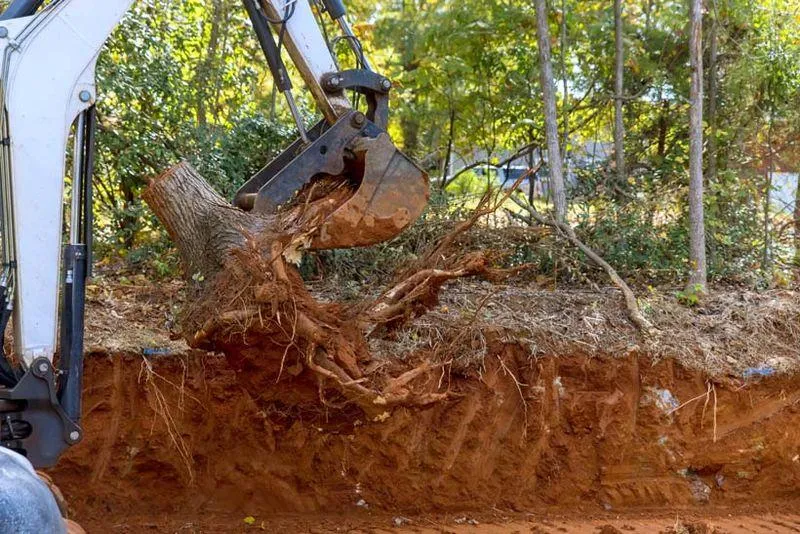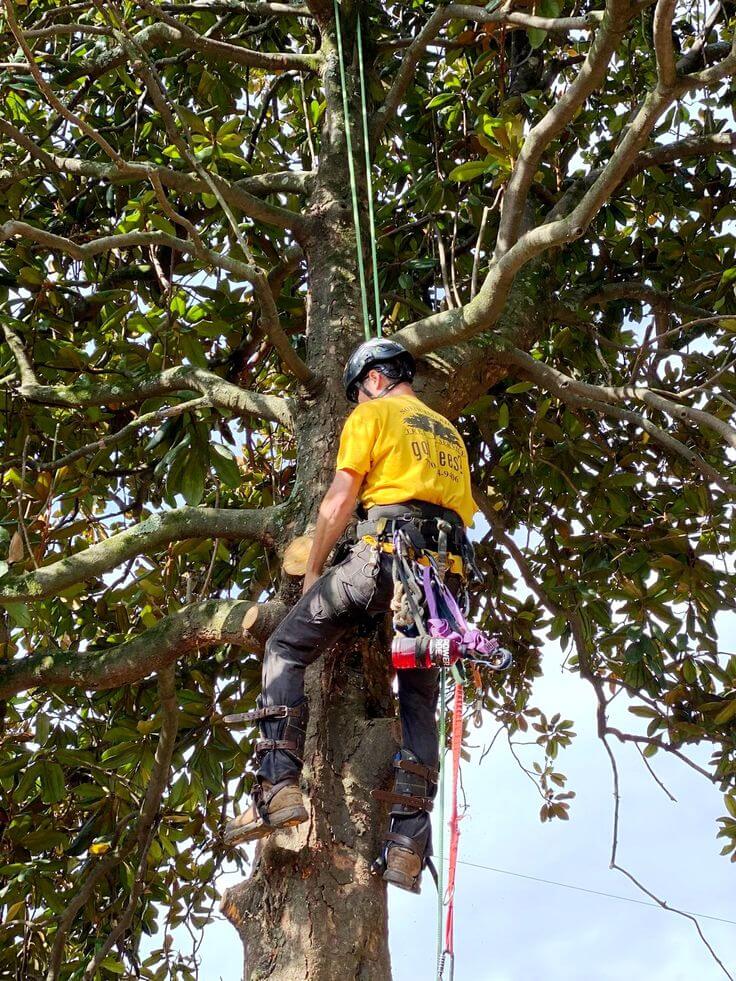The Fastest Way to Remove Stumps: A Complete Guide
Tree stumps in your yard can be frustrating obstacles. Whether they’re remnants from a recent tree removal or have been sitting there for years, they’re often inconvenient and unsightly. Fortunately, there are quick and efficient ways to remove stumps, and this guide will walk you through the best options.
Understanding the Problem
Why Stump Removal is Necessary
Tree stumps aren’t just eyesores; they can cause several issues:
• Safety Hazards: People can trip over them, especially in high-traffic areas.
• Pest Problems: Stumps attract termites, ants, and other pests.
• Regrowth: Some stumps may sprout new trees, leading to ongoing maintenance.
• Obstructed Landscaping: Stumps can interfere with your plans to plant grass, flowers, or shrubs.
Common Challenges with Stump Removal
Removing stumps isn’t always straightforward. The depth of the roots, the type of tree, and the soil conditions all play a role. Large stumps with deep, sprawling roots can be particularly challenging.
Methods for Stump Removal
Here’s a detailed look at the various methods available, including their advantages and limitations.
Manual Removal Techniques
Tools Required
Shovel
Axe
Mattock
Root saw or bow saw
Rope or chain (optional)
Steps to Follow
• Dig Around the Stump: Use a shovel to expose the main roots.
• Cut the Roots: Use an axe or root saw to sever the roots.
• Loosen and Remove: Pry the stump loose with a mattock, then pull it out.
• Best For: Small or medium stumps where physical labor isn’t an issue.

Chemical Removal
How it Works
Chemical stump removal involves applying a product like potassium nitrate or a stump remover to accelerate decomposition. These products are available at most garden or hardware stores.
Steps to Follow
Drill several deep holes into the stump.
Pour the chemical into the holes and add water.
Wait for the stump to soften, which can take weeks or months.
Pros:
Minimal effort required.
Affordable.
Cons:
Very slow process.
May leave chemical residues in the soil.
Burning the Stump
Safety Considerations
Check local fire regulations before attempting.
Have a fire extinguisher or water source nearby.
Step-by-Step Guide
Drill holes into the stump and fill them with a flammable material like kerosene.
Allow the kerosene to soak for a day.
Light the stump and monitor the burn until the stump is completely gone.
Best For: Rural areas where burning is permitted and safe.
Stump Grinding
Equipment Needed
Stump grinder (available for rent at hardware stores).
Steps to Follow
Position the grinder over the stump.
Grind down the stump in layers until it’s below ground level.
Fill the hole with soil or mulch.
Advantages:
Fast and efficient.
Suitable for large stumps.
Disadvantages:
Requires access to heavy equipment.
May not remove all roots.
Using Heavy Machinery
When to Consider This Option
For large stumps or multiple stumps, heavy machinery like an excavator or backhoe is the fastest solution.
Cost and Time Efficiency
Though more expensive than other methods, heavy machinery can remove stumps in minutes, making it ideal for large-scale projects.
Best For: Professionals or large property owners.
Comparing Different Methods
Speed
• Fastest: Heavy machinery and stump grinding.
• Moderate: Burning.
• Slowest: Manual and chemical methods.
Cost
• Cheapest: Manual removal and burning.
• Most Expensive: Hiring machinery or professionals.
Environmental Impact
Burning releases CO2, while chemicals may affect soil health.
Manual and grinding methods are more eco-friendly.
Preparing for Stump Removal
Safety Precautions
Wear gloves, safety goggles, and sturdy footwear.
Be aware of underground utilities before digging or using machinery.
Gathering the Right Tools
Ensure you have all necessary tools and equipment before starting. Renting or borrowing tools can save money if you don’t own them.

Step-by-Step Guide to the Fastest Removal
Evaluating the Stump
Inspect the size and location of the stump to determine the best removal method. Larger stumps may require grinding or machinery, while smaller stumps might be manageable with manual methods.
Choosing the Right Method
For the fastest results, choose grinding or machinery. These methods are efficient for most situations.
Executing the Plan
Prepare the site by clearing debris.
Follow the specific steps for your chosen method.
Dispose of the stump and any remaining debris responsibly.
Maintenance After Stump Removal
Filling the Hole
After the stump is gone, fill the hole with soil, mulch, or gravel to level the ground and prevent accidents.
Restoring the Landscape
Plant grass or shrubs to restore the area’s appearance. Consider adding decorative elements like flower beds or garden ornaments.
Professional vs. DIY Stump Removal
When to Call a Professional
For large, stubborn stumps.
If you lack the tools or expertise.
When time is a critical factor.
DIY Tips and Tricks
Rent equipment to save costs.
Plan ahead and allocate plenty of time for the project.
Conclusion
Removing stumps doesn’t have to be a hassle. Whether you’re tackling it yourself or calling in professionals, understanding your options can make the process smoother. With the right approach, you can say goodbye to those stubborn stumps quickly and efficiently.

